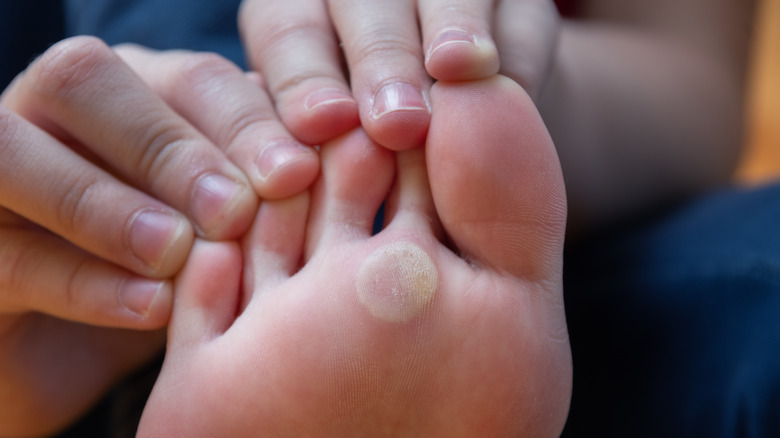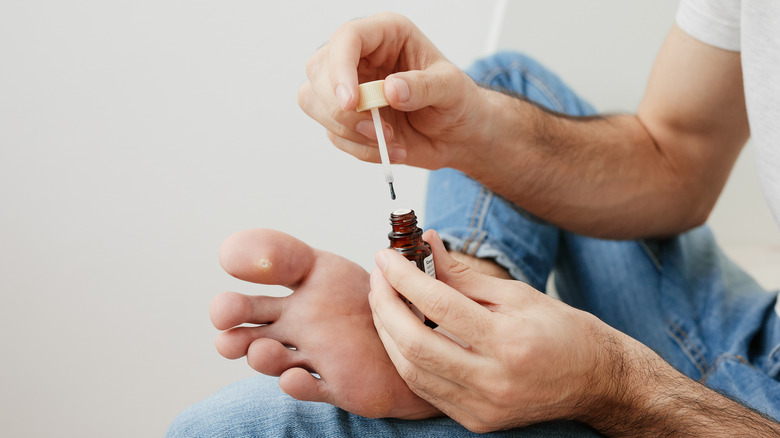Can You Naturally Get Rid Of Warts?
When your skin is infected with human papillomavirus (HPV), this can trigger excess cellular growth called a wart. When you develop a wart, the skin in that area develops a thick, hard outside layer. Warts can range from about the size of a pinhead to the size of a pea. They can grow anywhere, but are most often found on the hands and feet, according to WebMD. People with broken skin or a weakened immune system are most prone to developing them, says the Cleveland Clinic.
Cleveland Clinic notes that warts can vary in appearance, either being dome-shaped, flat, or rough. They can vary in color, ranging from being flesh-toned to brown, gray, or black. Warts can also vary in type, depending on where they are located. Common warts, the most common type, are found on the hands. Flat warts may appear on the face. Plantar warts, which resemble calluses with tiny black dots in the middle, can develop on the soles of the feet. Genital warts, which are sexually transmitted, grow in the genital or anal areas. Finally, periungual and subungual warts form under or around the fingernails and toenails.
Healthline says that warts are contagious so it is important to take precautions to keep from transmitting them to other people. They suggest keeping them covered, avoiding picking at them, keeping your hands and feet dry, and washing your hands regularly.
Natural ways to get rid of warts
Mayo Clinic notes that most warts will go away on their own within a year or two. To get rid of warts sooner, your doctor may recommend minor surgery, freezing, laser treatment, and peeling medicine. However, people with healthy immune systems and who don't have diabetes can try home remedies.
Dr. Ran Goldman writes in Canadian Family Physician that one method involves placing a piece of duct tape over the wart. The tape is removed after four to six days so the area can be cleaned and the dead skin removed. After 12 hours, a new piece of tape is applied. The process is repeated for four to six weeks. This is safe, he says, but that there is limited evidence that it works.
Goldman says there are also over-the-counter salicylic acid medications to treat warts. He recommends salicylic acid patches, citing a review showing modest success in clearing warts. He notes that freezing warts didn't work any better than a placebo without multiple treatments. In addition, there can be problems, including blistering, irritation, scarring, skin color changes, and crusting.
Finally, some people use apple cider vinegar. Healthline explains that the procedure involves mixing two parts vinegar to one part water, and taping a cotton ball saturated with the mixture to the wart. The process is then repeated every night until the wart falls off. They warn there is little evidence that this works and it could cause chemical burns.

